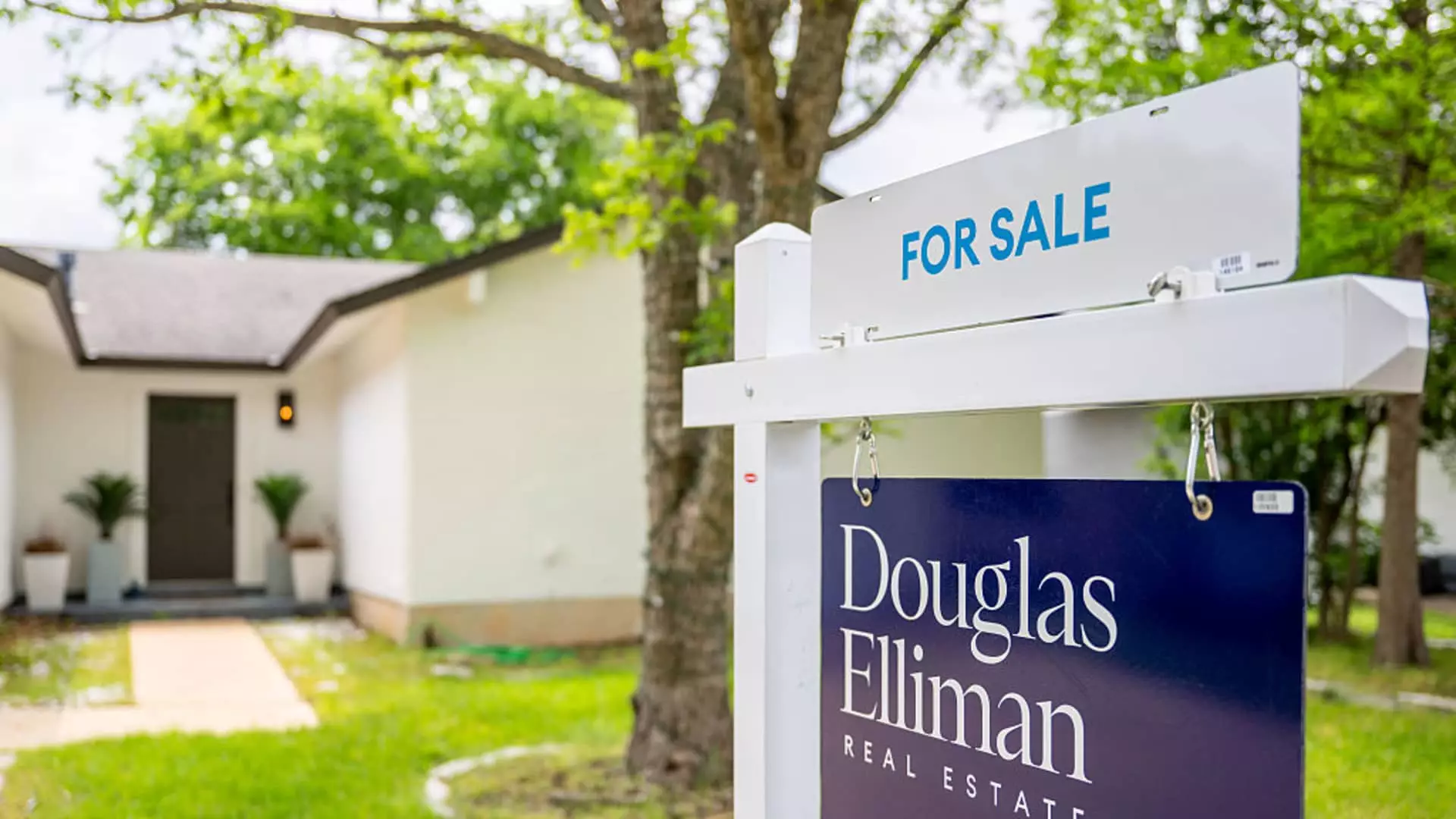The housing market, often viewed as a bellwether of the economy, is currently grappling with a complex set of dynamics. Recent data indicates a modest increase in the sales of previously owned homes—up a meager 0.8% in May compared to April, reaching an annualized rate of 4.03 million units, according to the National Association of Realtors (NAR). Ostensibly, this slight uptick defies predictions that indicated a drop, yet such low growth signals profound underlying issues that can’t be glossed over by mere numbers.
The figure becomes even more concerning when juxtaposed with last year’s performance, showing a decline of 0.7% year-over-year. This indicates that the market, while showing brief flickers of life, is by no means thriving. The Northeast saw the most robust sales increase, but the story shifts dramatically in the West, where a staggering 5.4% drop in transactions has struck a worrying note. As the most expensive region in America, the West serves as a stark reminder of the ongoing affordability crisis that is stifling potential buyers.
The Mortgage Conundrum
One of the most glaring impediments to a burgeoning housing market remains the challenge posed by high mortgage rates. After stabilizing in March, the average rate on a 30-year fixed mortgage soared to over 7% in April, casting a long shadow over buyer sentiment. Lawrence Yun, NAR’s chief economist, articulates this sentiment succinctly: “The relatively subdued sales are largely due to persistently high mortgage rates.” This statement encapsulates the reality that many potential buyers are faced with today.
The resistance to lower mortgage rates is a choke point exacerbating the housing supply crunch. As the adage goes, “a rising tide lifts all boats,” yet it seems the tides are shifting in the wrong direction for many. Individuals looking to make a home purchase often find themselves locked out of the market entirely, as the costs of financing outweigh the benefits—creating a paradox where those with capital find opportunities to invest in properties at a time when others cannot afford to do so.
Supply and Demand Realities
Interestingly, an increase in the supply of homes available for sale represents a rare glimmer of hope in this otherwise grim landscape. By the end of May, the inventory swelled to 1.54 million units, an over 20% increase from the same period last year. Despite this gain, it’s crucial to note that at the current sales pace, this equates to just a 4.6-month supply, which remains historically low. The reality is that the supply-demand equation still puts pressure on home prices; the median price of an existing home sold in May reached an all-time high of $422,800, representing a 1.3% year-over-year increase.
What’s more, reports indicate that 28% of homes sold during this period went for above the list price, an increase from 18% the month before. However, this percentage slipped from a staggering 30% reported in May 2024, prompting concerns that the market may not be as robust as previously thought. The trajectory of home sales indicates a shift toward higher price brackets, yet an unsettling trend is emerging—sales in the upper price ranges appear to be falling off compared to last year.
The Emerging Buyer Woes
Equally disconcerting is the data surrounding first-time homebuyers, which fell from 31% to 30%. This persistent decline underscores a daunting reality: the prospects of homeownership remain an elusive dream for many. With 27% of all transactions conducted as all-cash sales, it becomes increasingly clear that traditional buyers, particularly those new to the market, are facing insurmountable barriers.
Homes are lingering on the market longer, averaging 27 days compared to 24 days last year. This added inertia reflects a broader hesitation among consumers, who may be reassessing their life choices amidst a turbulent financial landscape. The increased complexity of navigating this housing market could sow seeds of doubt for buyers, especially first-timers, leading to a growing sense of anxiety around homeownership.
We stand at a critical juncture in the housing market, where rising prices, high mortgage rates, and wavering buyer confidence collide. The specter of affordability looms large, and while there may be brief moments of stability, systemic issues remain underlying this fragile market. It’s not merely an economic question; it’s a question of equitable access to one of life’s most fundamental needs—housing.

